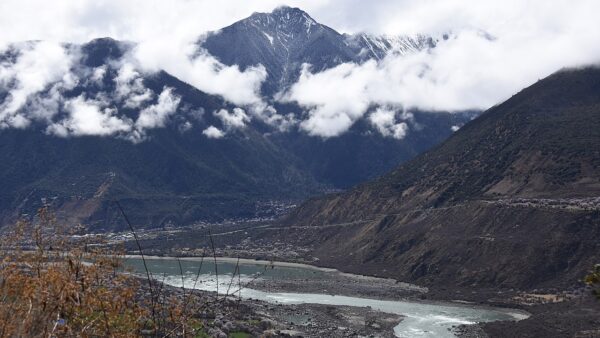China gave the go-ahead to build what would be the world’s biggest hydropower dam in Tibet on 25 December, sparking concerns in India.
First proposed in 2020, the dam on the lower reaches of the Yarlung Zangbo River could triple the output of the Three Gorges Dam in central China, itself currently the world’s biggest.
The Yarlung Zangbo enters India as the Brahmaputra in the states of Assam and Arunachal Pradesh.
It then goes through Bangladesh before emptying into the Bay of Bengal.
Beijing officials said the dam would help meet China’s carbon neutrality goals and create jobs in the Tibet Autonomous Region.
Reuters notes that a section of the Yarlung Zangbo falls 2,000m over a 50km stretch, “offering huge hydropower potential as well as unique engineering challenges”.
It said the cost of building the dam would eclipse the outlay for Three Gorges, which was around $35bn.
That included the cost of resettling some 1.4 million people the dam’s reservoir displaced.
Authorities didn’t say how many people the Yarlung Zangbo would displace.
India and Bangladesh raised concerns about the dam’s impact on the local ecology and the flow of the river downstream.
“As far as we are concerned, we have already communicated that if this dam materialises, the Brahmaputra ecosystem will become completely fragile, it will become dry, and we will have to depend solely on rainwater from Bhutan and Arunachal Pradesh,” Assam state chief minister Himanta Bisma Sarma told The Times of India.
“This is a substantial problem for us,” he added.
At a media briefing today, Chinese foreign ministry spokesperson Guo Jiakun said the project had gone through “rigorous scientific verification” and would not affect local ecology or downstream flows, The Times of India reported.
Subscribe here to get stories about construction around the world in your inbox three times a week
Further reading:
The post China green-lights world’s biggest dam in Tibet appeared first on Global Construction Review.


